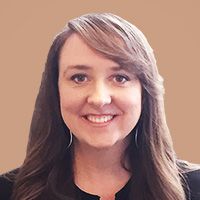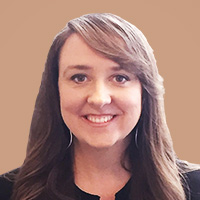New Rules for Reverse Mortgages
The government is changing the loan's insurance costs and reducing how much applicants can borrow—and the window for borrowing under the old rules is closing fast.


In a surprise move, the government is changing the reverse mortgage rules again. And the changes, which affect the cost of insurance and borrowing limits, are a mixed bag for borrowers.
Upfront mortgage insurance premiums will be a flat 2% for every loan, a change that means some applicants will pay more, while others will save. If you qualify to take up to 60% of the eligible loan amount in the first year with the remainder available the following year, your upfront cost will rise one and a half percentage points from the previous 0.5%. For those who qualify to take more than 60% in the first year, generally because of an outstanding mortgage that must be paid off, the upfront cost drops by half a point, from 2.5%.
Ongoing insurance costs will drop for all borrowers, with the annual premium falling from 1.25% to 0.5%. “Over time, that could have a significant impact,” says Peter Bell, president of the National Reverse Mortgage Lenders Association. For every $100,000 in loan balance, you’ll save $750 a year. The lower ongoing cost may offset much or all of the higher upfront cost.
From just $107.88 $24.99 for Kiplinger Personal Finance
Become a smarter, better informed investor. Subscribe from just $107.88 $24.99, plus get up to 4 Special Issues

Sign up for Kiplinger’s Free Newsletters
Profit and prosper with the best of expert advice on investing, taxes, retirement, personal finance and more - straight to your e-mail.
Profit and prosper with the best of expert advice - straight to your e-mail.
The calculation for maximum loan proceeds is also being tweaked. The adjustments will hit most new borrowers, cutting potential proceeds by 10% to 12%. The new rules “reduced the percentage of home value that’s available to borrowers at most ages and at most interest rates,” says Bell. The older you are and the lower the interest rate, the more proceeds you get, but most everyone will now qualify for less than before.
These changes, which go into effect on October 2, are the latest in the government’s effort to shore up the federal Home Equity Conversion Mortgage program and ease concerns about the health of its insurance fund. Other recent efforts to keep the program alive have included instituting a financial assessment for applicants and limiting the drawdown of loan proceeds in the first year
The government has a vested interest because most reverse mortgages are federally backed HECMs. Homeowners age 62 or older can tap home equity in the form of a lump sum, line of credit or monthly draws. The loan does not have to be repaid until the homeowner dies, sells the house or moves out for at least 12 months, and borrowers never owe more than the home’s market value. With a HECM, the government covers any gap if the house sells for less than the loan’s balance.
Impact on Borrowers
The changes are “raising costs across the board, while simultaneously lowering borrowing power,” says Cliff Auerswald, president of All Reverse Mortgage, in Orange, Cal., and the combination could push reverse mortgages out of reach for some seniors. One recent applicant would have $12,000 left over after his forward mortgage was paid off under the old rules, but under the new rules that same applicant will be $70,000 short, he says, and wouldn’t be able to complete the loan.
It’s not only applicants on the edge who may no longer be able to turn to reverse mortgages. The rule changes undercut the “standby strategy,” too, says Auerswald. That strategy calls for setting up a reverse mortgage line of credit as a reserve that a retiree can tap as needed. The falling costs of reverse mortgages heightened the strategy’s appeal in recent years. “It didn’t cost much to set up that reserve,” says Auerswald.
Now the upfront costs will be higher. On a $600,000 house, the upfront mortgage insurance premium will now be $12,000, compared with just $3,000 under the old rules. (In addition to the upfront insurance premium, borrowers owe closing costs that typically run about $2,500. Some lenders may charge an origination fee of up to $6,000.)
While the lower ongoing insurance cost is helpful, the savings may be muted because you don’t pay the annual premium on the untapped line of credit, only on any balance you’ve racked up. (For more on how that strategy works, read Using Home Wealth as Emergency Fund.)
There’s a quickly closing window to take advantage of the old rules before the new ones go into effect in October. It will be tough for anyone just starting the process to beat the deadline, though. Before you can apply for a reverse mortgage, you must set up and complete a counseling session, which is required by the government. Only then can you apply for a reverse mortgage. “The window is crazy short,” says Auerswald.
Profit and prosper with the best of Kiplinger's advice on investing, taxes, retirement, personal finance and much more. Delivered daily. Enter your email in the box and click Sign Me Up.

-
 The Retirement Donor's Checklist: Key Deadlines by Gift Type
The Retirement Donor's Checklist: Key Deadlines by Gift TypeRetirees have some charitable contribution options that can help avoid spikes in income from RMDS and capital gains.
-
 Cooler Inflation Supports a Relief Rally: Stock Market Today
Cooler Inflation Supports a Relief Rally: Stock Market TodayInvestors, traders and speculators welcome much-better-than-hoped-for core CPI data on top of optimism-renewing AI earnings.
-
 Are T-Mobile's Prepaid Perks a Home Run or a Strikeout?
Are T-Mobile's Prepaid Perks a Home Run or a Strikeout?T-Mobile's prepaid lineup promises MLB.TV, T-Mobile Tuesdays and hotspot data. But do the perks make it worth switching?
-
 Amazon Resale: Where Amazon Prime Returns Become Your Online Bargains
Amazon Resale: Where Amazon Prime Returns Become Your Online BargainsFeature Amazon Resale products may have some imperfections, but that often leads to wildly discounted prices.
-
 Roth IRA Contribution Limits for 2026
Roth IRA Contribution Limits for 2026Roth IRAs Roth IRAs allow you to save for retirement with after-tax dollars while you're working, and then withdraw those contributions and earnings tax-free when you retire. Here's a look at 2026 limits and income-based phaseouts.
-
 How to Search For Foreclosures Near You: Best Websites for Listings
How to Search For Foreclosures Near You: Best Websites for ListingsMaking Your Money Last Searching for a foreclosed home? These top-rated foreclosure websites — including free, paid and government options — can help you find listings near you.
-
 Luxury Home Prices Rise as the Rich Dodge High Mortgage Rates
Luxury Home Prices Rise as the Rich Dodge High Mortgage RatesLuxury home prices rose 9% to the highest third-quarter level on record, Redfin reports, growing nearly three times faster than non-luxury prices.
-
 Four Tips for Renting Out Your Home on Airbnb
Four Tips for Renting Out Your Home on Airbnbreal estate Here's what you should know before listing your home on Airbnb.
-
 Five Ways to a Cheap Last-Minute Vacation
Five Ways to a Cheap Last-Minute VacationTravel It is possible to pull off a cheap last-minute vacation. Here are some tips to make it happen.
-
 How Much Life Insurance Do You Need?
How Much Life Insurance Do You Need?insurance When assessing how much life insurance you need, take a systematic approach instead of relying on rules of thumb.
-
 When Does Amazon Prime Day End in October? Everything We Know, Plus the Best Deals on Samsonite, Samsung and More
When Does Amazon Prime Day End in October? Everything We Know, Plus the Best Deals on Samsonite, Samsung and MoreAmazon Prime The Amazon Prime Big Deal Days sale ends soon. Here are the key details you need to know, plus some of our favorite deals members can shop before it's over.